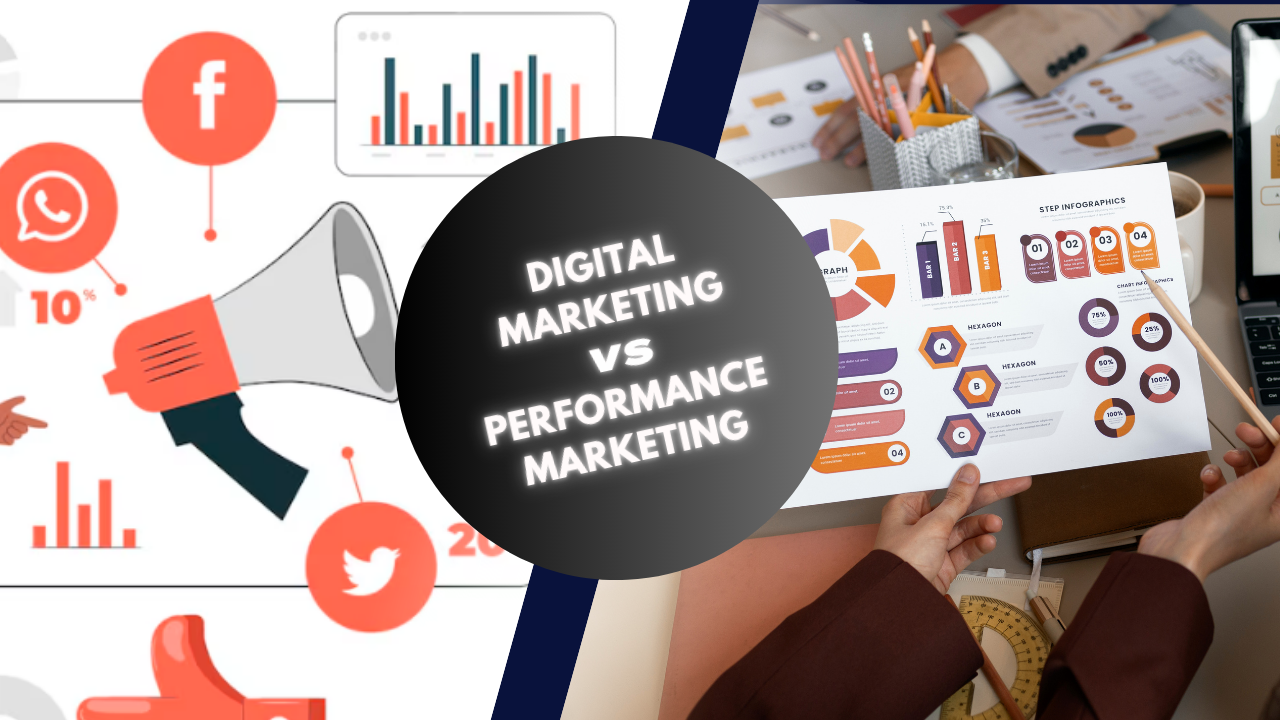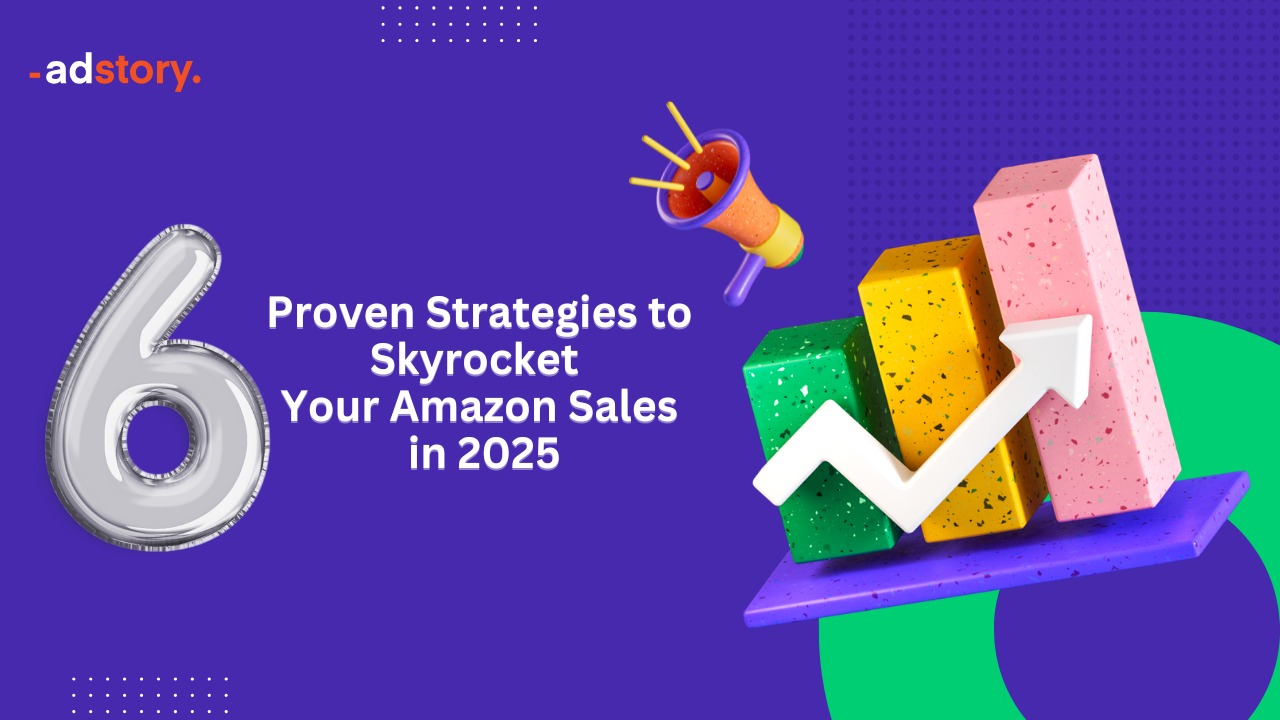Over the years, marketing has witnessed a great transition that has given an opportunity for brands to interact with customers in different ways. Performance marketing and digital marketing are two different types of online marketing that are widely used now. They may be related in some ways, but they deliver different results and thus demand different techniques.
Entrepreneurs must be aware of these concepts and the differences between them that exist in order to make wise marketing decisions which would be the most beneficial in terms of ROI. The article explains the differences, advantages and provides ways to decide which strategy is the most valuable for your business.
What is Digital Marketing?
Digital marketing is an umbrella term that encompasses all online marketing techniques. It includes a variety of strategies aimed at promoting products or services through digital channels. Some of the most common digital marketing tactics include:
● Search Engine Optimization (SEO) – Improving website visibility on search engines.
● Content Marketing – Creating valuable content to engage and inform audiences.
● Social Media Marketing – Promoting brands on platforms like Facebook, Instagram, LinkedIn, and Twitter.
● Email Marketing – Sending personalized content to subscribers.
● Influencer Marketing – Partnering with influencers to promote products.
● Pay-Per-Click (PPC) Advertising – Running ads that charge based on clicks.
Advantages of Digital Marketing
1. Broad Audience Reach – Enables businesses to target local and global customers.
2. Brand Awareness & Authority – Establishes trust and credibility through consistent online presence.
3. Long-Term Growth – SEO and content marketing efforts can yield sustainable traffic over time.
4. Cost-Effective – Many digital marketing tactics, such as social media and email marketing, are affordable.
Limitations of Digital Marketing
1. Longer Time to See Results
Strategies like SEO and content marketing often take months to show noticeable results. Building organic traffic, improving search rankings, and gaining visibility can be a slow process.
2. Constant Algorithm Changes
Digital platforms, including search engines and social media, frequently update their algorithms. These changes can significantly impact visibility and reach, often requiring marketers to constantly adjust their strategies.
3. Indirect ROI Measurement
While digital marketing helps in building brand awareness and engagement, tracking direct conversions or linking activities to actual sales can be challenging. The return on investment is often less clear.
What is Performance Marketing?
Performance marketing is a results-driven approach where advertisers pay only when specific actions (e.g., clicks, leads, or conversions) occur. It relies heavily on data analytics and tracking to optimize campaigns for maximum efficiency.
Popular performance marketing channels include:
● Google Ads (Search, Display, Shopping, YouTube Ads)
● Social Media Ads (Facebook, Instagram, TikTok, LinkedIn Ads)
● Affiliate Marketing & Influencer Partnerships
● Retargeting & Conversion Optimization
Advantages of Performance Marketing
1. Pay-for-Performance Model – Businesses only pay for measurable outcomes.
2. Highly Targeted Advertising – Ads are optimized for specific demographics, interests, and behaviors.
3. Real-Time Tracking & Optimization – Campaigns can be adjusted in real time to maximize effectiveness.
4. Scalability – Businesses can start with a small budget and scale based on performance.
5. Immediate Results – Unlike organic strategies, paid ads generate traffic and conversions quickly.
How Performance Marketing can Overcome the Limitations of Digital Marketing
1. Immediate Results and Visibility
Performance marketing uses targeted paid campaigns that deliver instant traffic and leads. Unlike organic methods, results can be seen almost immediately, offering faster returns.
2. Real-Time Adaptability
With performance marketing, campaigns can be continuously monitored and optimized in real-time. This allows businesses to respond quickly to algorithm changes or market shifts, ensuring consistent performance.
3. Clear and Measurable ROI
Every action in a performance marketing campaign—whether it’s a click, lead, or sale—is tracked. This provides transparent, data-driven insights and makes it easy to measure success and justify ad spend.
Even though performance marketing has many pros it also comes with some disadvantages.It is true that it mainly depends on the accuracy of the data collected and the related tracking activities which under certain circumstances might be seriously affected by the new privacy regulations and the use of ad blockers, resulting in the wrong attribution. In addition, there is a probability to concentrate more on short-term results than on the development of the brand over a longer period. The intense competition that leads to increased prices is the reason that not only big companies are able to spend such money for marketing. Another problem of creative fatigue and the bonds with one or several platforms also come out in the picture, as if there are no updates, then there will be no engagement and therefore no performance. Lastly, it could be that in the industries with long operating cycles and narrow customer segments, this marketing method is not 100% suitable.
How Entrepreneurs Can Increase Their ROI Through Performance Marketing
Entrepreneurs can maximize their return on investment (ROI) in performance marketing by implementing the following strategies:
1. Optimize Ad Targeting – Use audience segmentation to target high-intent users and avoid wasting budget on unqualified leads.
2. A/B Test Campaigns – Continuously test different ad creatives, copy, and targeting options to find the most effective combination.
3. Leverage Retargeting – Re-engage users who previously interacted with your brand but didn’t convert.
4. Use Data-Driven Insights – Monitor analytics to track conversions and optimize campaigns based on performance trends.
5. Automate Bidding Strategies – Use machine learning tools like Google Smart Bidding to adjust bids for maximum ROI.
6. Improve Landing Pages – Ensure that the landing pages where users are directed provide a seamless experience and encourage conversions.
7. Focus on High-Performing Channels – Identify and allocate more budget to the channels that generate the highest return.
8. Partner with Affiliates & Influencers – Work with partners who can drive quality leads and sales through their trusted audiences.
9. Monitor Ad Fraud & Click Waste – Use fraud detection tools to prevent bots and fake clicks from draining your ad budget.
10. Optimize for Mobile Users – Ensure ads and landing pages are mobile-friendly, as a significant portion of traffic comes from mobile devices.
By implementing these strategies, entrepreneurs can maximize their marketing spend and ensure that every dollar contributes to measurable business growth.
Key Differences: Digital Marketing vs Performance Marketing
|
Feature |
|
Digital Marketing |
Performance Marketing |
|
Objective |
|
Brand awareness & audience engagement |
Direct conversions & measurable ROI |
|
Payment Model |
|
Varies (fixed costs, subscriptions, etc.) |
Pay only when specific actions occur (CPC, CPA, CPL) |
|
Timeframe |
|
Long-term strategy |
Short-term & results-driven |
|
Measurement |
|
Indirect ROI tracking |
Real-time analytics & measurable performance |
|
Risk Factor |
|
Lower risk, but slow results |
Higher risk, but faster outcomes |
|
Budget Flexibility |
|
Lower upfront costs |
Requires consistent investment to maintain results |
|
Targeting |
|
Broader audience focus |
Hyper-targeted to specific users |
Which Marketing Strategy Should Entrepreneurs Use?
Both digital and performance marketing play crucial roles in a business’s growth strategy. The choice depends on various factors, such as business goals, budget, and timeline.
● When to Use Digital Marketing:
Digital marketing is an excellent choice when you want to develop brand recognition over a long-term period and become credible within your niche. It is most powerful for companies that are targeting traffic growth through natural means such as SEO and content marketing. If you have limited resources and want to have ongoing communication with your target audience and results over time, then digital marketing is the best cost-effective option that can be built up with time.
● When to Use Performance Marketing:
Performance marketing is the most suitable approach for the situation when quick and instant results are required, whether it is about sales, leads, or conversions. Performance marketing is an effective solution to companies that have a specific advertising budget. The ones willing to grow their business quickly and more efficiently. Performance marketing is not only the most effective method but also a godsend for businesses as it allows them to control their expenses with precision and measure the ROI directly. Real-time optimization of campaigns is enabled, and marketing activities are linked directly to business outcomes.
The Best Approach: A Hybrid Strategy
Many successful businesses use a combination of both strategies. For example:
● Use digital marketing to create informative content, rank higher on search engines, and establish a loyal customer base.
● Leverage performance marketing to boost sales during promotions, product launches, or seasonal campaigns.
Conclusion
While digital marketing is essential for brand building and audience engagement, performance marketing ensures quick and measurable results. For entrepreneurs, combining both strategies can create a powerful marketing ecosystem that drives sustainable business growth.
Would you like expert guidance on setting up an effective marketing strategy? Get in touch with Adstory - One of the best Digital Marketing Agency in Kerala and let’s discuss how to balance digital and performance marketing for your business success.



